The Forerunner 965 sits firmly in Garmin's premium bracket. It represented the brand's flagship running watch until the arrival of the new 970 in May 2025. As the Forerunner name might suggest, these are GPS watches primarily aimed at runners. The top-tier 900 series is particularly well suited to serious runners, especially those who regularly run trail, fells and mountains.
Fortunately, this also makes them serious contenders for hikers, hillwalkers, and backpackers who want top-tier GPS accuracy and comprehensive outdoor navigation tools in a lightweight package.
The standout feature is undoubtedly the vivid 1.4" AMOLED display, which transforms map reading and data visibility in ways that traditional Memory-in-Pixel (MiP) screens simply can't match.
Colours are vibrant, text is crisp, and outdoor visibility remains excellent even in bright sunlight. Combined with full-colour topographical mapping and turn-by-turn navigation, it's a compelling proposition for outdoor enthusiasts.
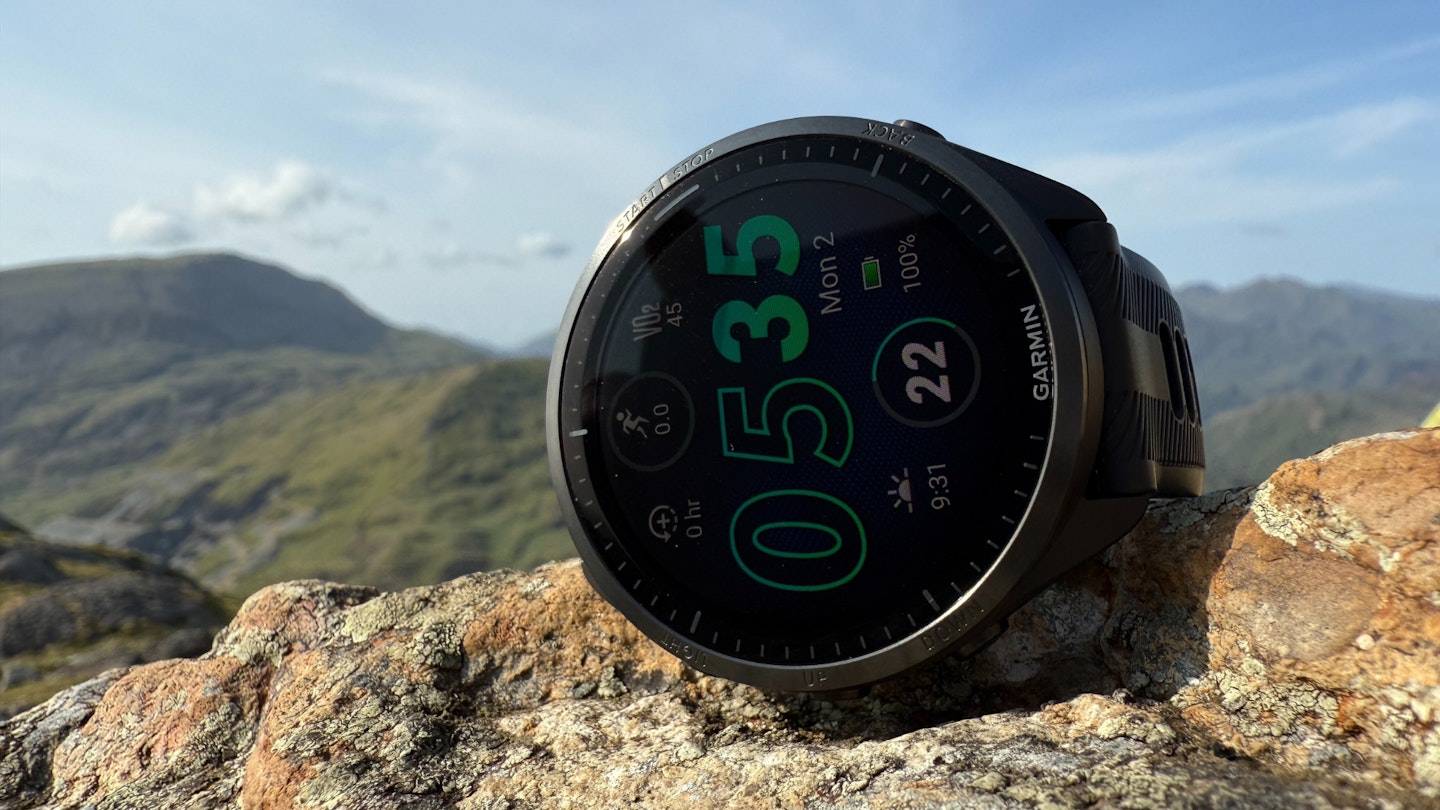 LFTO/Matt Jones
LFTO/Matt JonesPros
- Crisp 1.4" AMOLED display with excellent outdoor visibility
- Comprehensive full-colour mapping with turn-by-turn navigation
- Lightweight 53g titanium construction
- ClimbPro and detailed topographical features
- Multi-band GPS for improved accuracy
- Comprehensive health and safety features
Cons
- AMOLED display reduces battery life versus MiP/LCD alternatives
- Complex interface with steep learning curve
- Limited battery life is not suitable for extended off-grid, multi-day expeditions
- No longer Garmin's flagship running watch with the 970's arrival
- Not the toughest build (no sapphire crystal) and only water-resistant to 50m
| RRP: | £499.99/$599.99 |
| Weight: | 53g/1.86oz (with silicone strap) |
| Battery life (smartwatch mode): | Up to 23 days |
| Battery life (GPS): | All Satellite Systems: Up to 19 hours, GPS Only: Up to 31 hours |
| Display type and size: | AMOLED, 454 x 454px resolution, 35.4mm diameter |
| Case diameter: | 47.2mm |
| Waterproof rating: | 5 ATM / 50m |
At 53g, the 965 strikes an excellent balance between features and wearability. The titanium bezel adds a premium feel whilst keeping weight down, and the 47mm case size works well for most wrists.
Battery life is respectable at 31 hours in GPS-only mode, though this drops to around 19 hours with all satellite systems engaged – adequate for day hikes and runs but potentially limiting for ultras and multi-day adventures.
The comprehensive feature set extends well beyond basic GPS tracking. You get full mapping with ClimbPro for ascent planning, weather forecasting, safety features like incident detection and detailed health metrics including sleep tracking and recovery analysis.
Music storage and smartphone connectivity round out the package, making this a great companion for outdoor adventures and everyday use.
However, the watch’s capabilities can be overwhelming. Garmin’s extensive but complicated data suite isn’t the most user-friendly, especially to newcomers, and the AMOLED display, while beautiful, impacts battery life compared to more utilitarian alternatives.
Still, for serious athletes and outdoor enthusiasts who want the best Garmin has to offer in a relatively lightweight package, the 965 delivers.
Design and display
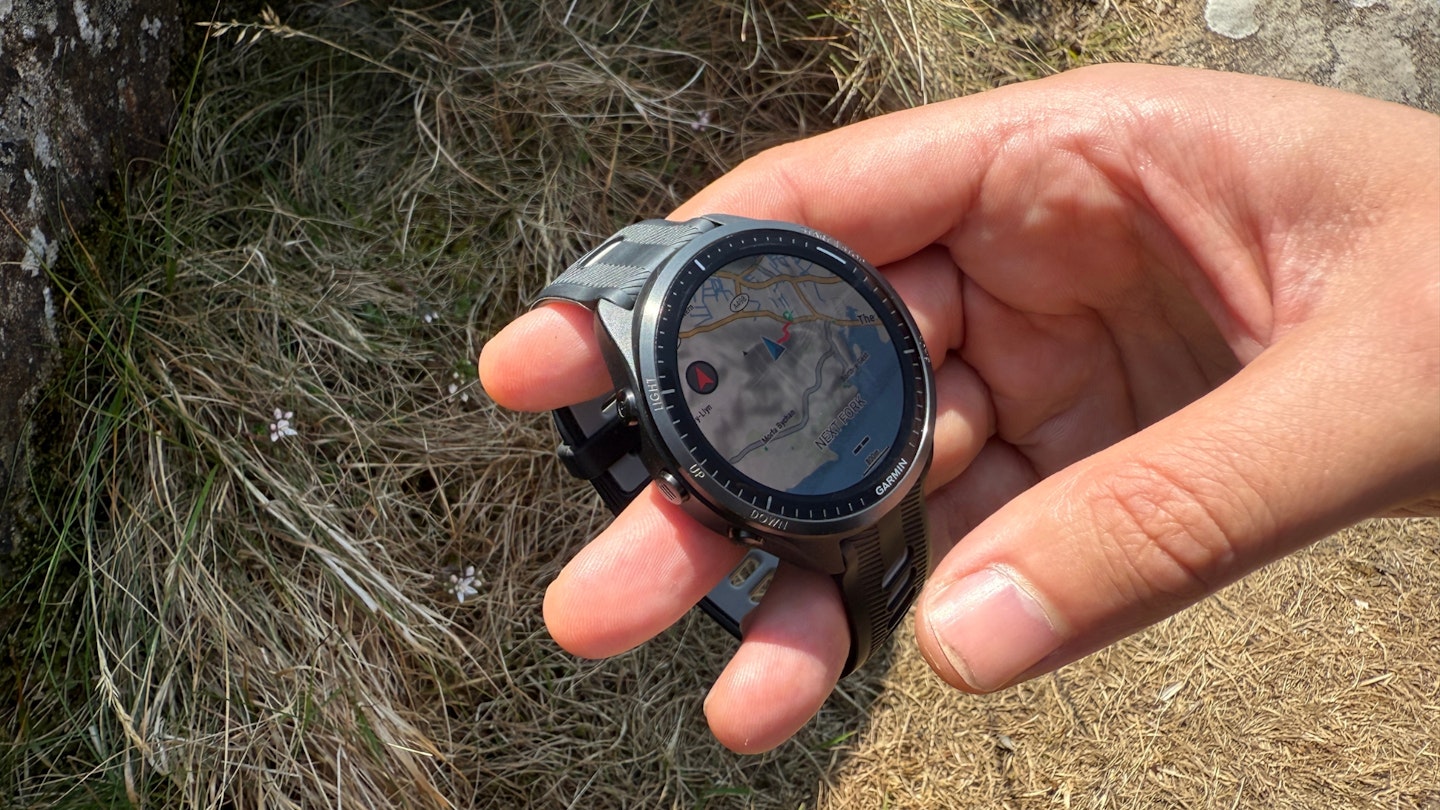
The Forerunner 965 represents a significant design evolution from its predecessors, with a much more refined look. The 47.2mm titanium bezel gives it a premium feel while maintaining the lightweight characteristics essential for extended outdoor use. It feels well-built but at 53g is light enough that you'll forget you're wearing it during long runs and hikes.
The star attraction is the 1.4" AMOLED touchscreen, which is a gamechanger for outdoor navigation. After years of squinting at MiP displays trying to decipher contour lines, the 965's screen feels like stepping into the future.
Maps are crisp, colours are vibrant and text remains legible even in challenging lighting conditions. The always-on mode means you can check your bearing without the wrist gymnastics required by some competitors (though this drains battery fast).
Since the 965 primarily focuses on low weight and bulk, it isn’t the toughest watch out there. The Gorilla Glass DX crystal should handle most knocks, but don’t expect the scratch resistance you get from sapphire.
Similarly, the 5 ATM (50m) water resistance ought to cover river crossings and unexpected downpours but doesn’t give the same ‘dunk me’ reassurance that 10 ATM/100m rivals offer.
The button layout follows Garmin's established pattern – three buttons on the left for navigation, two on the right for control. The touchscreen adds convenience for menu navigation, but crucially, every function remains accessible via buttons for gloved use or when precision matters.
Comfort
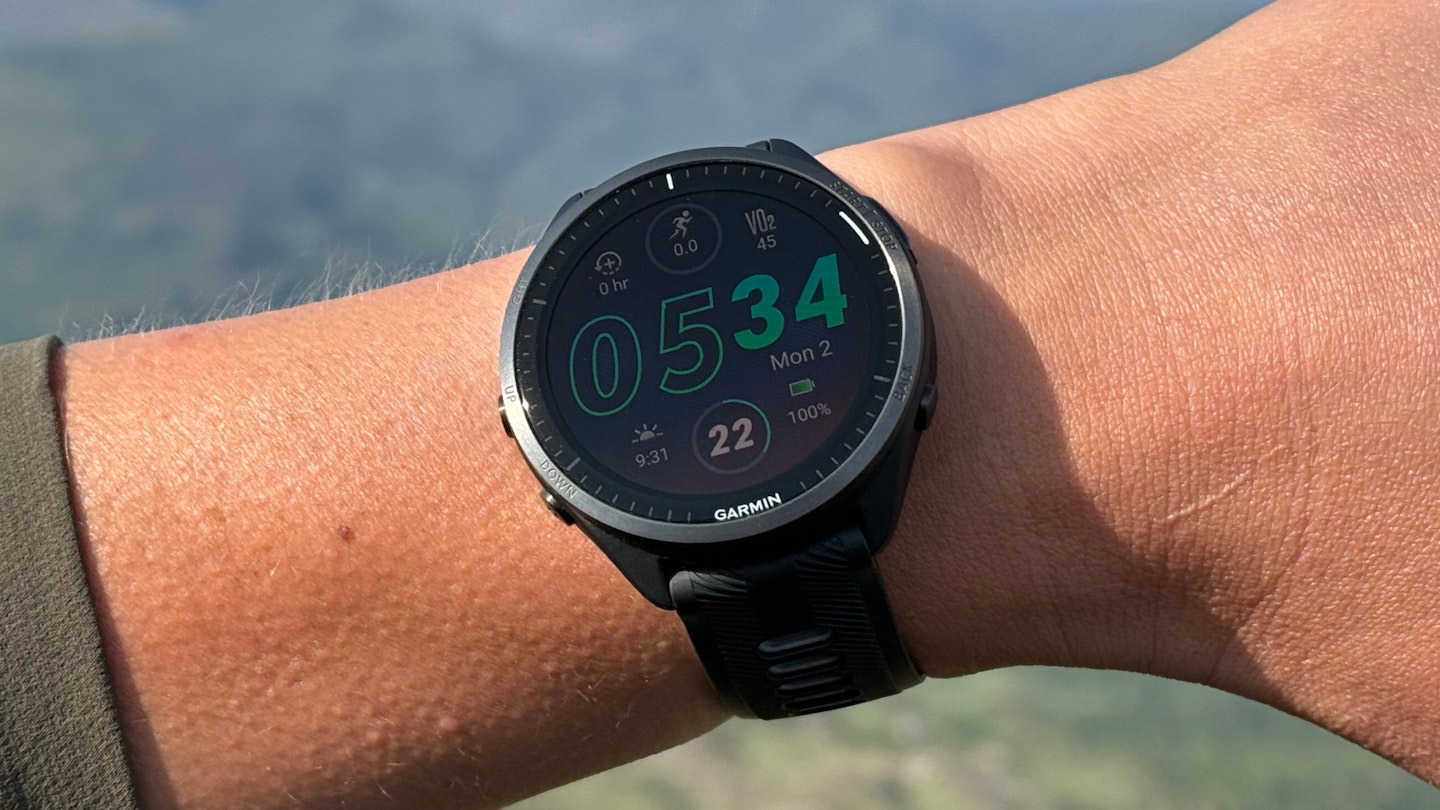
The 965's proportions work well for most wrist sizes. The 47mm case might initially seem large compared to rivals that come in 43mm sizes like the Fenix 8, but the curved lugs and relatively thin 13.2mm profile help it sit flush against your wrist.
Unlike some chunkier outdoor watches that can catch on jacket sleeves or feel top-heavy during dynamic movement, the 965 disappears during use.
For running, hillwalking and hiking, the weight distribution feels natural. It's light enough that you won't notice it during long days, yet substantial enough to inspire confidence in challenging conditions.
The supplied silicone strap is secure and easy to buckle/unbuckle, although I found it a bit sweaty during intense activity. Some may prefer to swap it out for a more breathable option for extended wear.
Battery life
Battery performance sits in the respectable rather than exceptional category. Garmin claims 31 hours in GPS-only mode, which translates to reality fairly accurately in my testing.
However, this drops to around 19 hours when using all satellite systems with multi-band GPS – the setting you'll likely want for maximum accuracy in challenging terrain.
For many day hikes, this presents no issues. Even long mountain days rarely exceed 12-15 hours, leaving comfortable margins. However, multi-day backpacking trips require careful power management or external charging solutions.
The AMOLED display's impact on battery life becomes apparent when compared to MiP alternatives that can stretch to 40+ hours, or more with solar capability.
I found that smartwatch mode delivers around 15-18 days of real-world use with the always-on display active – falling short of Garmin's claimed 23 days but still competitive for a watch with this feature set.
Mapping and navigation
This is where the 965 truly excels for outdoor enthusiasts. The full-colour topographical mapping is simply excellent, with clear contour shading, footpaths, roads, and points of interest all clearly marked.
The AMOLED display brings these maps to life in ways that traditional screens cannot match – suddenly you can actually see the terrain detail that makes navigation decisions possible.
The ClimbPro feature deserves particular mention for fellrunners and hillwalkers. Input a route with significant elevation gain and the watch provides real-time information about upcoming climbs – distance, gradient, and elevation remaining. This transforms pacing strategies and helps manage effort over long mountain days.
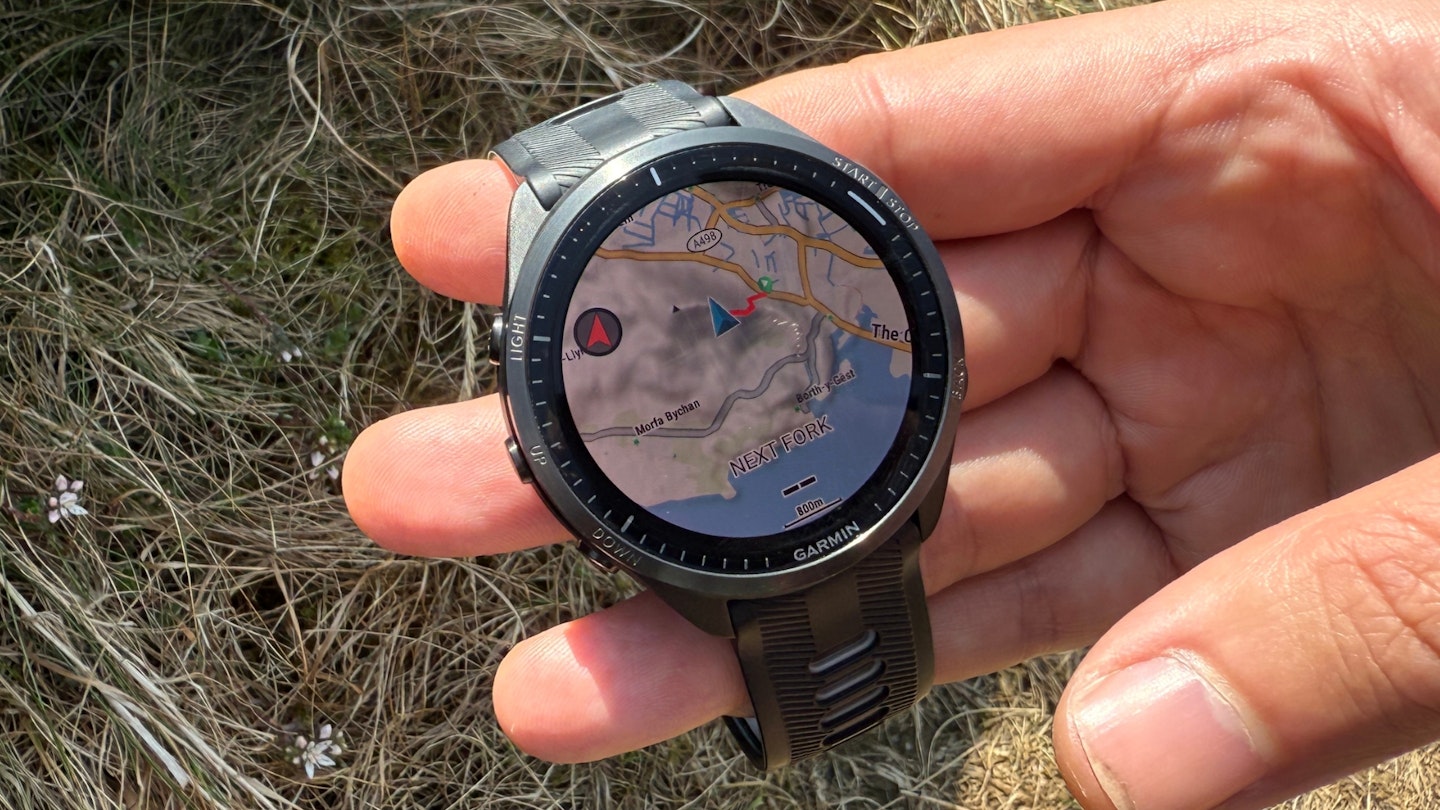
Turn-by-turn navigation works reliably, with clear prompts and haptic feedback when you need to change direction. The 'breadcrumb' trail shows your progress clearly, while off-route warnings help prevent navigational mistakes before they become serious.
Route creation can be done on the watch itself, but it's more practical to use Garmin Connect, Komoot, or similar services on your phone. Once set up, the integration works seamlessly, with routes syncing wirelessly and appearing ready to use within minutes.
Accuracy
GPS accuracy is where Garmin continues to lead the field. The multi-band capability, combined with support for all major satellite systems (GPS, GLONASS, Galileo, BeiDou, QZSS), delivers consistently accurate tracking. In my testing across various terrain – from open moorland to dense forest – GPS traces were smooth and precise.
The SatIQ feature intelligently switches between GPS modes based on conditions, using multi-band when needed but conserving battery with standard GPS in open terrain. In practice, this works transparently and effectively.
Heart rate accuracy from the optical sensor is generally good for steady-state activities like hiking, though it can struggle with rapid changes in intensity.
For most outdoor use cases, it's perfectly adequate without needing a chest strap. If you’re a serious runner, you’ll probably already be aware of OHR wrist-based sensor limitations.
Interface and features
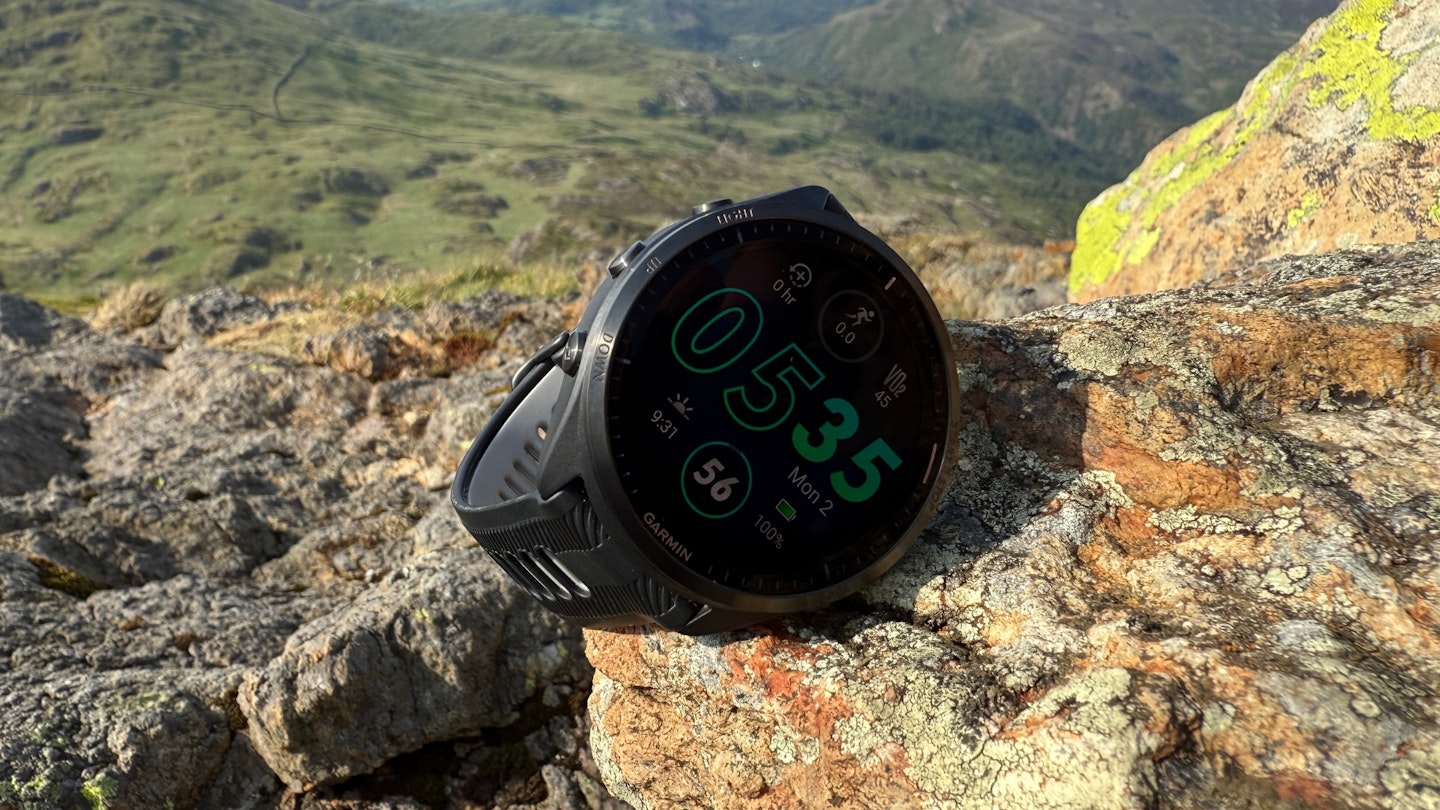
The 965's interface follows Garmin's established pattern, which brings both benefits and drawbacks. If you're familiar with other Garmin devices, navigation feels intuitive. If you're new to the ecosystem, expect a learning curve as you master the various button combinations and menu structures.
The touchscreen capability helps streamline some interactions, though map navigation is still button-based for zooming and panning, which is a frustration. On the other hand, full button functionality is a much better choice when it’s raining, so this at least ensures the watch remains usable in all conditions.
Safety features are comprehensive, including incident detection, weather alerts and safety tracking. The built-in compass, barometer and altimeter provide additional navigational confidence, while the weather forecasting helps with planning decisions.
Price and competition
When it was first released, the Forerunner 965 launched with a UK RRP of £600. That positioned it at the premium end of the GPS watch market. However, since the new Forerunner 970 became available in May 2025, Garmin has dropped the price of the 965 to a much more competitive £500, reflecting its second-tier status.
That’s still a bit more expensive than similarly capable alternatives like the COROS Apex 2 Pro (£450) but the Forerunner 965 offers a more comprehensive feature set and vastly superior display technology.
Other main competition comes from the Suunto Race and Race S series, which offers similar AMOLED display technology and outdoor features at a slightly lower price point (the Race S in particular is excellent value), though with less comprehensive mapping capabilities.
Within Garmin's own lineup, the 965 is now positioned between the new Forerunner 570 (£460) and the 970 (£630). Beyond that, there’s also the Enduro 3 (£770) and the flagship Fenix 8 (from £880). For trail runners and outdoor enthusiasts specifically, the 965 still offers most of the Fenix's mapping capabilities in a lighter, more affordable package.
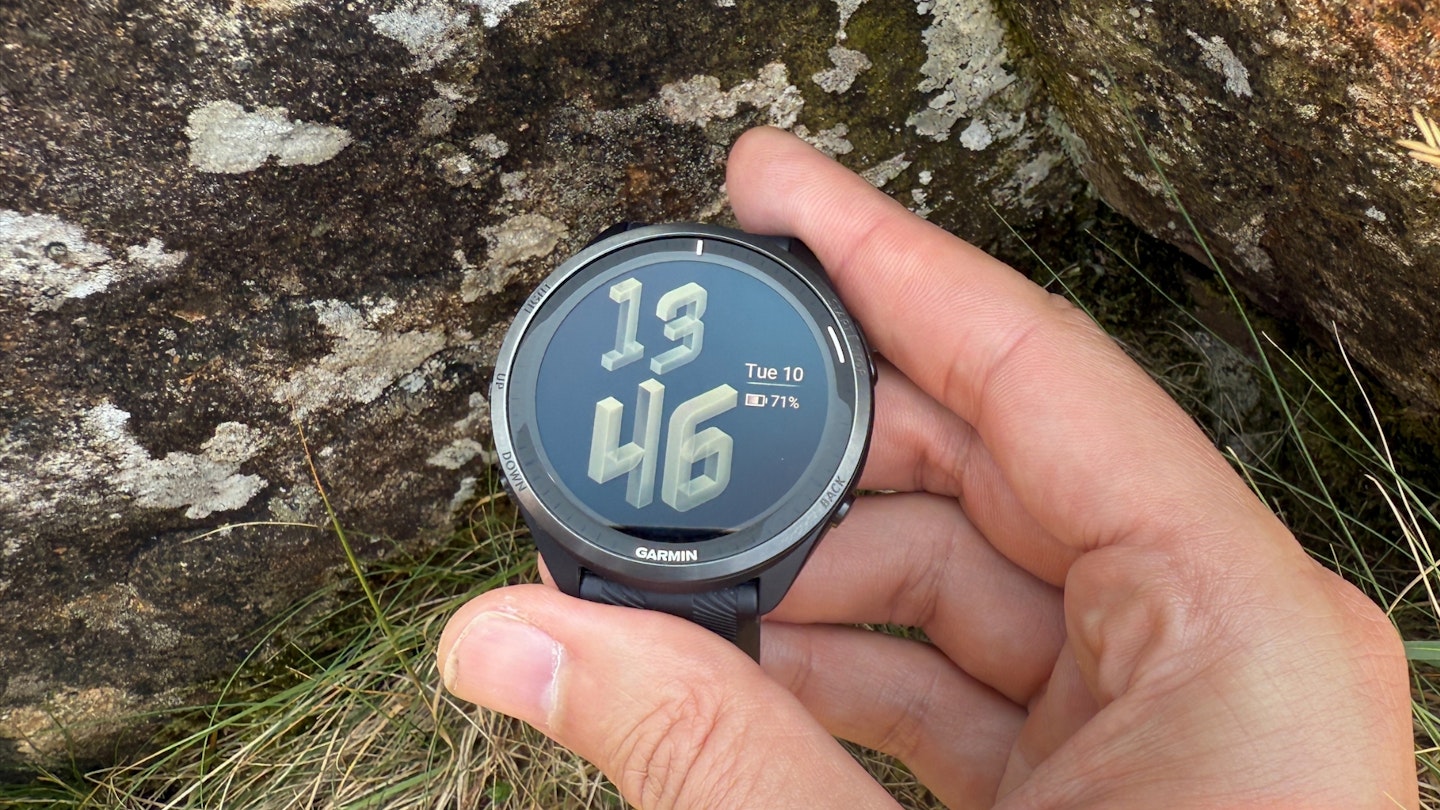
We haven’t yet tested the Forerunner 970, which makes it tricky to answer the inevitable question that many will be asking: “should I get the newest model?” What isn’t in doubt is that the changes to the 970 are more than just cosmetic.
Firstly, it adds a sapphire crystal, which is undoubtedly an upgrade, plus more activity tracking modes and Garmin’s new ECG sensor. It also has an external LED flashlight.
Unlike the 965, it supports voice commands (just like the Fenix 8), meaning you can make calls, send texts and access your voice assistant hands-free when connected to a compatible smartphone. You can also control the watch functions with your voice, allowing you to start activity modes and access your stats while your hands are full.
If any of those features are important to you, it might be worth spending the extra for the latest flagship Forerunner. On the other hand, the 965 has superior battery life (though Garmin has already released a software update for the 970 to help improve this).
Verdict
The Forerunner 965 represents Garmin's pinnacle outdoor GPS technology at its most accessible and user-friendly. The AMOLED display transforms the experience of using maps and navigation features, while the comprehensive feature set covers virtually every outdoor scenario you might encounter.
For runners, hikers, hillwalkers and wild campers who prioritise accurate navigation, detailed mapping, and comprehensive safety features, the 965 delivers exceptional value, especially now its price point has been lowered. The lightweight design makes it suitable for extended wear, while the extensive feature set provides confidence in challenging conditions.
However, the battery life limitations mean it's better suited to day adventures rather than extended expeditions, and the complexity may overwhelm casual users. If you're committed to outdoor adventures and want the best navigation technology available, the 965 is an excellent choice – just be prepared for the learning curve that comes with Garmin's comprehensive approach.
Shop this product
About the author

Matt Jones is a freelance journalist based in the heart of Snowdonia National Park, he’s a vastly experienced gear tester and self-confessed outdoor kit geek. Matt’s been one of our main gear testers for the last couple of years and is the first person we call with any complicated kit queries that need in-depth and forensic analysis.
